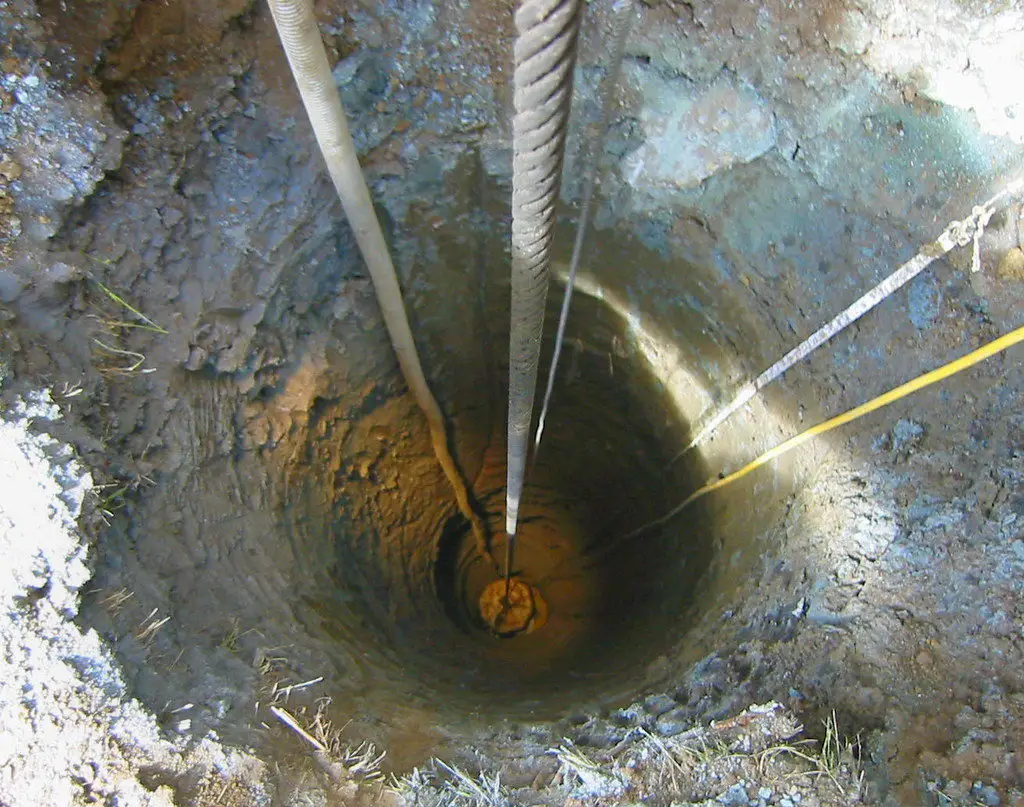
When embarking upon a project to install a ground source heat pump, one has a decision to make about the orientation of the ground loop. There are a couple of different options available for the installation of the pipework or “ground loop” which collects the stored solar heat used by heat pumps. The first option would be a shallower, slinky or straight ground loop where the pipes are laid in trenches beneath the ground, or if space is at a premium, there is the more expensive option of using boreholes, which can be drilled straight down into the ground. Of course, if we had more volcanic activity in Scotland, we could take advantage of geothermal heat but that’s sadly not an option in this part of the world.
Table of Contents
Specification and location
Boreholes for heat pumps will have been designed and specified to provide sufficient energy collection from the ground to allow the system to operate efficiently. Careful planning is required to ensure that the borehole is installed according to the manufacturers design and it is recommended only to deal with drilling companies who are affiliated to the British Drilling Association providing you with greater confidence that the drilling process is being conducted by true professionals.
The depth of the borehole will be dependent on several variables including the heat load of the property and the geology of the local ground, both of which should have been established by a qualified professional during the project specification and site survey. The location of boreholes for heat pumps is always site specific and must be determined during an in-depth planning process.
Drilling
There are several types of drilling rig available, which are better suited to different ground conditions and can be of varying sizes to accommodate the drilling of boreholes from the smallest gardens right up to the biggest building sites. A common technique is a rotary drill, where the rig rotates drilling rods into the ground, cutting their way as they go. This method is relatively clean, although there will be some spoil and a little water discharged, though this should be cleaned up by the drillers before they leave site. Using this method of drilling can be fairly quick, with progress of between 50 and 60 metres per day, depending on the underlying geology.
How many holes, how deep and how big?
The specification of the boreholes for heat pumps is usually calculated using software that takes into consideration the size of the heat pump, the geology of the ground and the heat losses of the house or building. Boreholes will usually be between 60 and 120 metres deep and may consist of any array of anything between 1 and 12 boreholes depending on the project size. A standard borehole is approximately 120 – 150mm in diameter.
What goes in the borehole?
Once the drilling of boreholes is completed, the borehole loop is inserted into the hole. This loop consists of a pair of plastic pipes that are joined together at the bottom by a ‘U’ bend. This bend is joined by a method called electro-fusion welding and is manufactured and tested in the factory. Once the loop has been lowered into the hole it must be filled with water and pressure tested.
Backfilling the boreholes
As soon as the borehole loop has passed the pressure test, the hole is backfilled. It is important that the backfill material is the correct type and that it fills the hole completely. This is achieved using a natural clay compound called bentonite, which is mixed with water into the bottom of the hole and then solidifies over time. When finished, all that remains will be the tails of the pipe protruding approximately 500mm from the ground. The drillers will attach end taps to these pipes to protect them. This then leaves the boreholes for heat pumps ready for connection to the manifold by others.
A professional company should provide a fully project managed service to meet all your project requirements ensuring the work is professionally undertaken and completed to an exacting standard.
You can use our online directory to find an installer for your own heat pump project.